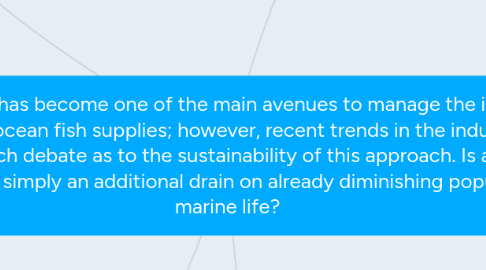Aquaculture has become one of the main avenues to manage the increasing demand for ocean fish supplies; however, recent trends in the industry have resulted in much debate as to the sustainability of this approach. Is aquaculture (farming fish) simply an additional drain on already diminishing populations of marine life?
by Philip Degebrodt


1. What is Aquaculture?
1.1. What methods of aquaculture are available
1.2. What are the environmental impacts of aquaculture?
1.3. Why do we need aquaculture?
2. What are the positive effects of aquaculture?
2.1. Aquaculture is also utilized in restoring threatened and endangered aquatic species, rebuilding ecologically important shellfish habitats, producing nutritional and industrial compounds and stock enhancement
2.2. Aquaculture farms and used to supplement the populations of recreational, commercial, and ecologically-important species, this is known as 'restoration aquaculture' For example, 40% of Alaska salmon caught in the commercial fishery start their lives in a hatchery
3. What are the projected levels of ocean fish consumption for future generations
3.1. What other avenues are available to manage the increasing demand for ocean fish supplies
4. What are the negative effects of aquaculture
4.1. aquaculture farms are sometimes referred to as "reverse protein factories" - Where resources far outweigh the product
4.2. Intensive farming of fish can lead to higher levels of viral, fungal and bacterial diseases and potentially spread to native fish populations
4.3. Waste products are often flushed into the surrounding waters where they add to the contamination of the water supply
4.3.1. Pesticides and veterinary drugs used to treat the Pests and diseases
4.4. non-native species escape from fish farms to compete with native fish for food and habitat resources
5. What trends have sparked recent debates in regards to the sustainability of aquaculture being used to combat increasing demand for ocean fish supplies
5.1. How are these trends different from previous practices
6. How much seafood is produced through aquaculture
6.1. What countries produce most of the worlds farmed seafood
6.1.1. What are the Accepted standards of sustainable farming and are they good enough?
6.1.2. How do these standards vary in different countries and under different governments
